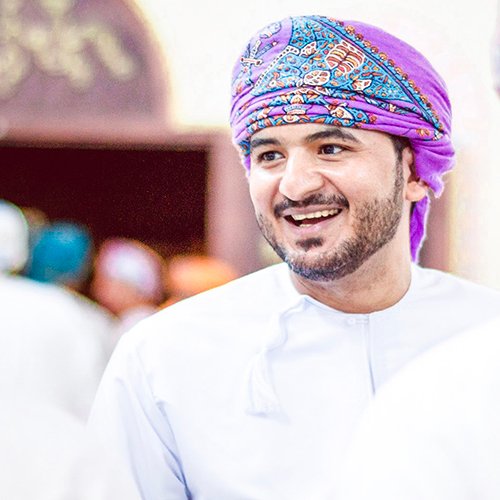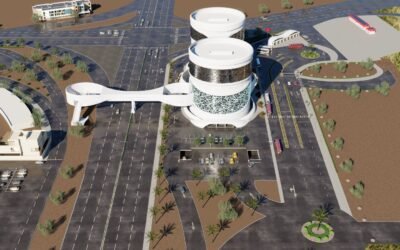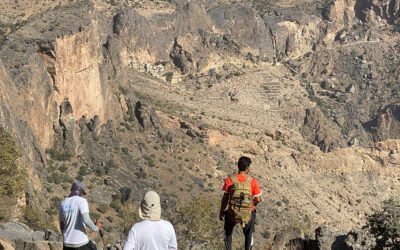The opening ceremony today was patronaged by His Highness Prince Badr bin Abdullah bin Mohammad bin Farhan Al Saud, Minister of Culture and Chairman of the Board of Trustees of the Diriyah Biennale Foundation, with the participation of His Highness Sayyid Faisal bin Turki Al Said, the Sultanate of Oman’s ambassador accredited to the Kingdom of Saudi Arabia and its permanent representative to the Organization of Islamic Cooperation, and His Excellency Jamal bin Hassan Al-Moosawi, Secretary- General of the National Museum.
His Excellency Jamal bin Hassan Al-Moosawi, Secretary-General of the National Museum, said: This is the first participation of the National Museum in the sisterly Kingdom of Saudi Arabia, as the selected collections shed light on the concept of beauty in Oman, which remained faithful to the Islamic origins and the identity of the country alike, as it raises the value of authentic beauty. It celebrates purity, simplicity and avoidance of affectation.
He added: “The National Museum is honored to celebrate the art of the Islamic world by participating in the “Al-Madar” exhibition, which is held in the first Biennale of what is known as Islamic art in the Kingdom of Saudi Arabia. It is reflected in the selected works with their designs that appear simple at first glance, but reflect the experience of unity and interdependence, and highlight the importance of contemplation and attention to the smallest details.”
For her part, Aya Al-Bakri, CEO of the Diriyah Biennial Foundation, said: “This event, the first of its kind, aims to highlight and enrich Islamic cultural heritage throughout the ages. It was achieved by the first Biennale of Contemporary Art in the Kingdom of Saudi Arabia, which concluded in 2022 CE.
She added: “Our mission at the Diriyah Biennale Foundation is to enrich the cultural and artistic exchange between the Kingdom of Saudi Arabia, as it is a center for the Islamic world, and artistic communities around the world, and to celebrate the many facets of the arts, so we are very happy to seize the opportunity to introduce the world to Islamic arts through the works of Ashraf It has a group of pioneers of the artistic community in the Kingdom, as well as cooperation with a number of distinguished success partners from around the world to create an upscale dialogue based on cooperation and cultural exchange between Saudi Arabia and the countries of the world in light of a thriving and diverse artistic climate.”
The corner of the National Museum at the Biennale includes a selection of archaeological artifacts that embody the duality of harmony and contrast in the manifestations of Omani culture, which reflects a wonderful balance between simplicity and decoration.
The corner was divided into (4) axes, which are Dualism, Beauty in the void, Between two Realms, and the power of simplicity.
Dualism embodies the idea that viewing the world as having pairs of opposing elements—whether in harmony or in conflict—is the essence of Islamic philosophy, originating from the inherent dualism in the Noble Qur’an. Various verses *(surahs)* mention the duality of nature, such as the cycle of day and night, and the parallel presence of the heavens and the earth, while others reflect duality in the spirit of good and evil. The verse in surat *al-Baqarah*, “until the white thread (light) of dawn appears to you distinct from the black thread (darkness of night),” (1:187) has inspired the use of black and white in art and crafts to echo ideas of duality in the physical world, in the passing of time, and in spirituality. At the same time, the idea of Oneness remains, as an indication of the presence of Allah as One.
This section includes samples of utensils from the archaeological site of “Hamasa” in al-Buraimi Governorate, in black and white colors, dating back to the period (9th century CE), carved stone tablet from al-Hijrah mosque, which dates back to the al-Yarubi Dynasty and is nearly four centuries old, and a tomb stone from the Dhofar Governorate dating back to the period (1696- 1697 CE).
Throughout Oman’s various regions, Arabic script was artistically unconfined by established calligraphic traditions. The calligrapher or engraver focused instead on understanding the nature of the material used, whether parchment, metal, stone, or wood. Calligraphic conventions were viewed as of particular significance, the importance rather being placed on filling, or creating, empty spaces, through which process information or beauty was reflected. In the objects presented here, the beauty in the void is expressed through the emptying of the pen box’s inkwell onto blank pages, creating a Qur’anic manuscript. It is also reflected through cutting spaces into metal and stone to create geometric patterns.
The artifacts of this axis include a pen box dating back to the 18th century CE, a necklace with pendant (Sumt type) inscribed with the Ayat al-Kursi dating back to the 19th-mid 20th century AD, and a Noble Quran Manuscript dating the 2 nd of Rabi’ al-Awal 1295 AH.
As for the third axis, this section includes a door with various inscriptions and Quranic verses. In Omani tradition, doors and gates served an important symbolic function beyond being physical portals between public and private spaces. The checkered design found on many Omani doors represents the intrinsic sense of transition imbued in thresholds, symbolising passage between two realms. Muslims are required to utter the name of Allah upon passing through a door, crossing the threshold with the right foot. In Oman, the first verse of Surat *al-Fath,* “”Verily, We have granted thee a manifest Victory,” (48:1) is often engraved near door handles.
The fourth section deals with the power of simplicity as a return to basics was of key importance in the Omani school of thought. Glazed tiles of the kind displayed here would originally have imitated the Kashani artistic tradition, filled with detailed ornamentation and images of wildlife. But in Oman the tiles were made without these additional details, as a way to focus instead on the pure shape.
The use of spatial features in traditional Omani houses focused on function as well as form. As an architectural element, openwork roundels were usually placed near the ceiling, serving to indicate the passage of time—as rays of sunlight shone through the roundel, the inhabitants of the house would have a sense of time from the direction of light and the movement of the shadows the roundel cast across the floor.
This section includes pieces of the remains of the glazed tiles of the ancient Qalhat Mosque, which date back to the period (14 th-15th CE), and two Roundel Stucco made of plaster dating back to the mid-20th century CE.
It is worth noting that the biennale is being organized by a global team of specialists in various artistic fields, under the title “The First House” as a gateway to the two holiest cities for Muslims from all over the world Mecca and Medina.
The biennial organizers look forward to contributing to the functional and spiritual stature of the site, transforming it into a destination that celebrates Islamic arts and culture, as well as enriching the artistic environment in Jeddah throughout the year. The event grounds extend over an area of 70,000 square metres, and include a theatre, exhibition spaces, workshops and classrooms, as well as a number of restaurants and shops.
additional information:
*ABOUT DIRIYAH BIENNALE FOUNDATION*
Established in 2020 by the Ministry of Culture in Saudi Arabia and inspired by Kingdom’s rich cultural heritage and its artists and makers, the Diriyah Biennale Foundation (DBF) assumes a critical and catalyzing role in nurturing creative expression and instilling an appreciation for the transformative power of the arts. Central to the Foundation’s mandate is to stage two recurring world-class biennales in contemporary and Islamic arts, alongside year-round interactive educational programs focused on engaging public audiences. The Foundation’s Contemporary Art Biennale held at the JAX district of Diriyah in 2021/2 was the Kingdom’s first biennale dedicated to contemporary art, providing a platform for discovery of and connection with Saudi Arabia’s burgeoning cultural scene and creative communities.
The inaugural edition of the Islamic Arts Biennale will be hosted at the Western Hajj Terminal of the King Abdulaziz International airport in Jeddah from January 2023 to April 2023, and is the first-of-its-kind in the world, interweaving contemporary works and never-seen-before historic artefacts.
*ISLAMIC ARTS BIENNALE*
The Diriyah Biennale Foundation’s Islamic Arts Biennale provides a holistic platform for new discourse around the Islamic arts, offering an unparalleled platform for learning, research, and insight into the genre. The exhibition will take place every two years and will be hosted at the Aga Khan award-winning Western Hajj Terminal in the King Abdulaziz International Airport in Jeddah, a city that for centuries has represented a junction point for cultural exchange and a venue that acts a port of entry for millions of pilgrims on their journey to Mecca and Medina.





